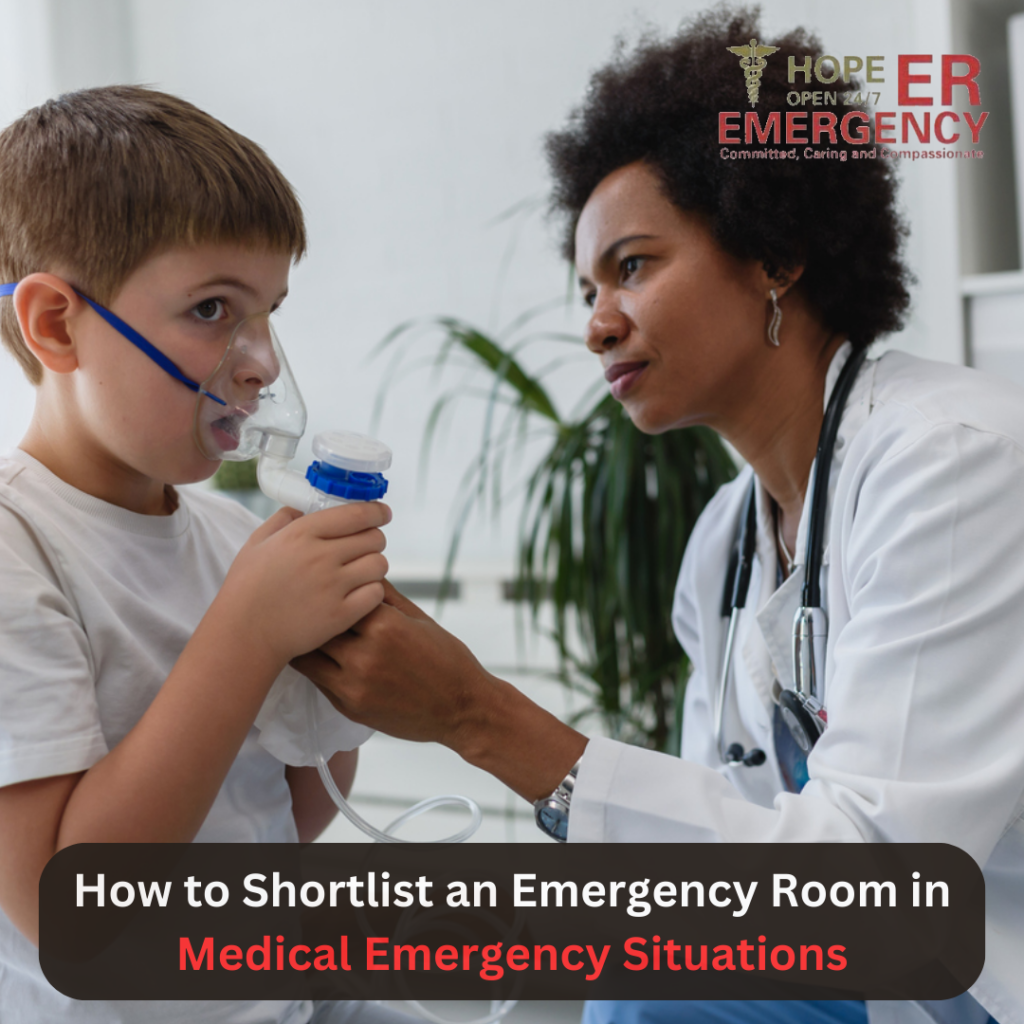When shortlisting medical care services for medical emergencies, it’s crucial to identify options that can provide prompt and effective care. Here’s a simplified guide to help you make your selection:
Call 911 or Local Emergency Number: In life-threatening emergencies, always start by calling 911 to get immediate assistance. The dispatcher can guide you to the nearest appropriate facility and provide crucial instructions while help is on the way.
Identify Nearby Emergency Rooms (ERs): Research and compile a list of nearby Emergency Treatment Centers or hospitals equipped to handle emergency medical cases. Prioritize facilities that are easily accessible and have a good reputation for emergency care.
Consider Urgent Care Centers: For non-life-threatening emergencies, urgent care centers can be a quicker and more cost-effective option than the ER. They handle a wide range of urgent medical needs and often have shorter wait times like Hope ER.
Specialized Centers: If you have a specific medical condition or need, consider specialized centers. For example, if you suspect a stroke or heart attack, look for a facility with a stroke or cardiac unit.
Check Insurance Coverage: Ensure that the facilities you consider accept your health insurance. This can significantly impact your out-of-pocket costs.
Review Online Ratings and Reviews: Read online reviews and ratings for the facilities you’re considering. While not the sole factor, they can provide insights into patient experiences and the quality of care.
Ask for Recommendations: Seek recommendations from friends, family, or healthcare professionals. They might have personal experiences or insights into the best local options.
Operating Hours: Check the operating hours of the facilities, especially if you’re looking for late-night or weekend care. Some urgent care centers offer extended hours.
Imaging Facilities: In some cases, an X-ray, CT scan, or Ultrasound can be a suitable option for determining internal wounds for initial assessments. Hope ER provides in-house imaging facilities for a quick assessment of injuries.
Cost Considerations: Understand the potential costs associated with each facility. ER visits are generally more expensive than urgent care or primary care visits, so consider your budget.
Distance and Transport: Take into account the distance to the facility and how you plan to get there. In emergencies, proximity can be critical.
Facility Reputation: Research the reputation of the facilities you’re considering. Look for any news articles or reports about their quality of care.
Remember, in severe or life-threatening emergencies, don’t hesitate to call 911 immediately. They can dispatch paramedics and guide you through life-saving procedures until help arrives. For less critical situations, urgent care centers are often more cost-effective and efficient than ERs. Always prioritize safety and timely care when making your choice.
You may contact Hope ER, an Emergency Treatment Center at Lufkin, that is known for providing the best possible treatment. Hope ER covers the area of Lufkin, Texas, and is the Emergency Room in the Lufkin Area. Hope ER is located at 2111 East Denman Avenue, Lufkin TX 7591, and can be reached @ 936-899-7243. Our website is www.hopeer911.com
